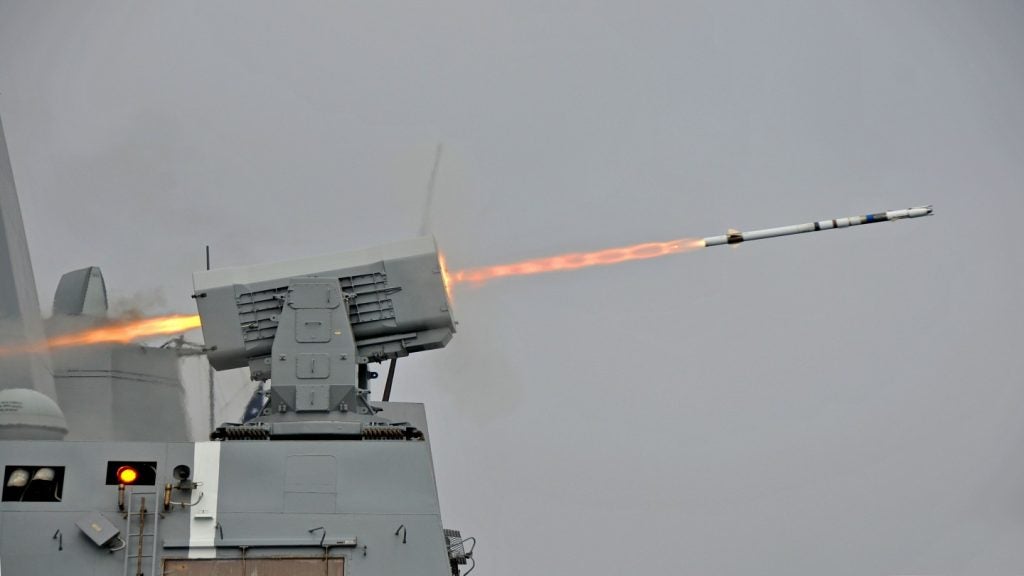Modernising and expanding surface naval vessels and submarine fleets helps to enhance warfare capabilities, something that is critical for military operations.
It is also important when it comes to protecting territorial waters, securing maritime trade routes and increasing regional influence in the face of simmering maritime boundary disputes.
With many leading countries undertaking multi-year naval modernisation and procurement drives, the market for naval vessels, including surface combatants and submarines, is set to grow steadily by more than 3% a year during 2022-2032, according to GlobalData’s estimates.
Industry leading suppliers of naval vessels, patrol boats, warships and submarines
Our Naval Technology team has researched and listed some of the leading manufacturers and suppliers of vessels used in naval defence.
All this information is based on professional intel, industry insights and our decades of expertise in and across the sector.
See Also:
Our extensive list includes suppliers of a wide range of vessels, from fast patrol boats to large surface warships and from nuclear-propelled submarines to auxiliary vessels.
Our rigorously researched and professionally written download document is filled with valuable industry insights.
Within this content, there is information that is highly useful for naval warfare strategists, naval commanders, senior procurement executives, naval ship technicians, system integrators, maintenance supervisors, and other individuals involved in the acquisition, operation and maintenance of vessels.
This download also contains some highly detailed information on the vessel manufacturers and their product lines, alongside contact details for procurement teams looking to find suppliers.
Leading types and uses of military naval vessels
Naval forces and coast guard units use different special-purpose military vessels that come in different shapes and sizes depending on their capabilities and functions.
The vessels used by navies and maritime law-enforcement agencies include, but are not limited to:
· Frigates, cruisers, and destroyer warships
· Aircraft and guided missile careers
· Corvettes and littoral combat ships (LCSs)
· Auxiliary and support vessels
· Offshore patrol vessels (OPVs)
· Multi-purpose amphibious assault ships
· Nuclear-powered attack and ballistic missile submarines (SSNs/SSBNs)
· Diesel-electric and air-independent propulsion (AIP) submarines (SSKs/SSPs), and
· Midget submarines (SSMs)
Latest technological advancements in vessel technology
Modern warships feature stealth design, advanced propulsion and communication systems.
In addition, they also incorporate the latest warfighting technology and weaponry to perform a range of maritime missions including deterrence, power projection, and sea command and control.
Some of the most recent and relevant technological developments include, but are not necessarily limited to:
-Use of sustainable fuels and energy-efficient ship engines
-Artificial intelligence (AI),
-Internet of things (IoT)
-Robotics
-Smart sensors
-Autonomous control
These are just some of the advanced technologies that will have a transformative impact on naval shipbuilding and modernisation in the years to come.
FAQs
What types of naval vessels are commonly used by military forces?
Naval forces commonly use a variety of vessels, each designed for specific roles. These include frigates, destroyers, submarines, aircraft carriers, patrol boats, and amphibious ships.
Each vessel serves a different purpose, from defensive operations to power projection and combat support. Submarines, for example, can be used for stealth missions, while aircraft carriers serve as mobile airbases.
What are the key advancements in naval vessel technology?
Recent advancements in naval vessel technology include stealth designs, advanced propulsion systems, and smart sensors.
Innovations such as AI, autonomous systems, and the Internet of Things (IoT) are also transforming vessel capabilities.
These technologies allow for improved efficiency, operational range, and mission flexibility. Sustainability initiatives, like energy-efficient engines, are also emerging trends.
How are modern warships equipped for combat?
Modern warships are equipped with cutting-edge weaponry, including missile systems, anti-aircraft defences, and electronic warfare capabilities. #
They also feature advanced communication systems for real-time data sharing and coordination. Some vessels use stealth technology to minimise detection by radar and sonar systems, enhancing their tactical advantage in warfare.
Who can benefit from using the Buyer’s Guide for naval vessels?
The Buyer’s Guide is ideal for naval strategists, procurement managers, ship technicians, and others involved in acquiring or maintaining naval vessels.
It provides comprehensive information on leading manufacturers, helping users make informed purchasing decisions based on detailed product descriptions and contact information.
How is naval vessel procurement expected to evolve in the coming years?
Naval vessel procurement is expected to see steady growth, driven by global naval modernisation efforts.
Countries are investing in upgrading their fleets with more advanced, multipurpose vessels to address evolving security challenges.
The focus will likely shift towards technologies that enhance mission flexibility, sustainability, and combat readiness, ensuring fleets can meet the demands of modern maritime warfare.






